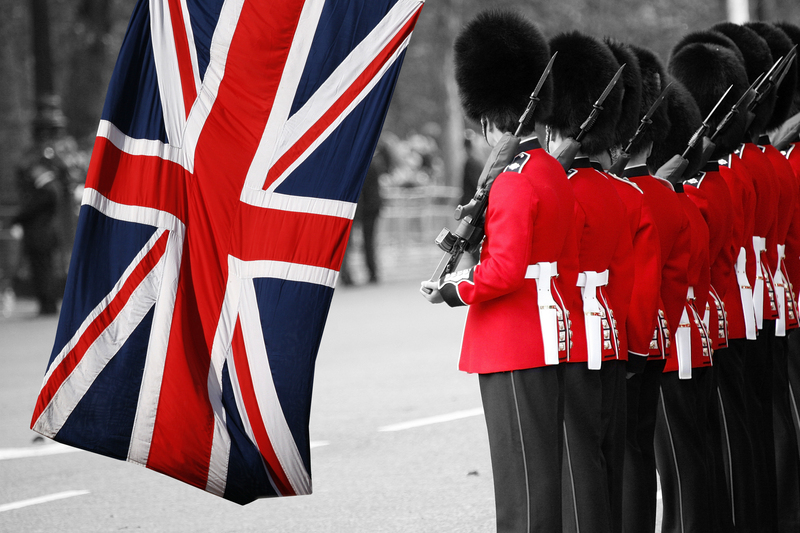The Complex World of Piano Moving and Professional Expertise
Posted on 19/05/2025
The Complex World of Piano Moving and Professional Expertise
Pianos are among the most beloved and sophisticated musical instruments. Their beauty, size, and intricate mechanisms pose unique challenges when moving them from one location to another. From grand concert venues to intimate living rooms, relocating these instruments requires careful planning, specialized knowledge, and a great deal of physical skill. In this comprehensive guide, we will explore the nuanced realm of piano moving and shed light on why professional piano moving expertise is crucial for the safety of both the instrument and the movers.

Understanding the Importance of Professional Piano Moving
Pianos are heavy, delicate, and expensive investments. Attempting to move them without proper training can result in damage not only to the instrument, but also to floors, walls, and even personal safety. The significance of professional expertise is paramount for a successful and stress-free piano relocation.
- Pianos are unwieldy: Even the smallest upright pianos can weigh between 300 and 500 pounds, while grand pianos often exceed 1,000 pounds.
- Their mechanisms are intricate: A piano contains thousands of moving parts, strings under high tension, and sensitive tuning pins and soundboards.
- Precision is essential: Even slight bumps or tilts can throw off a piano's tuning or damage its structural integrity.
- Value preservation: Damaging a high-end piano can result in repair costs that far outweigh the investment in hiring a professional piano mover.
Expert piano movers bring a wealth of experience, specialized equipment, and a deep understanding of different types of pianos and moving scenarios.
Types of Pianos and Their Unique Moving Challenges
Upright Pianos
Upright pianos, also known as vertical pianos, stand between 110 and 135 centimeters tall and are generally more compact than grand pianos. However, their weight distribution can make them difficult to move safely. Unbalanced lifting or tilting can cause damage to the delicate action inside the piano, or strain the legs and casters.
Grand and Baby Grand Pianos
Grand pianos and baby grands are wider and heavier than upright pianos. Their curved side, lid, and fragile legs increase risk during the moving process. The legs often need to be removed, and the instrument placed on a piano skid board for safe transport. Experts must take care to support the piano evenly and protect its finish from scratches or dents.
Digital and Console Pianos
Digital pianos and console pianos are generally lighter, but may still require careful handling to prevent damage to their electronic components or cabinetry. While less complex than acoustic pianos, moving them still benefits from professional oversight.
Tools and Techniques Used by Piano Moving Professionals
Expertise in piano moving is about more than brute strength. Professional piano movers use a range of specialized tools and techniques to protect both the piano and the environment in which it is moved:
- Piano Dollies and Skid Boards: Stabilize the instrument and allow for smooth, even transport in various directions.
- Moving Straps and Winches: Ensure the piano stays securely fastened during lifting, sliding, and loading onto moving trucks.
- Shock-Absorbing Blankets: Protect the piano's delicate finish from scratches, chips, and environmental elements.
- Ramps and Hoisting Systems: Pianos often need to be moved over stairs, through narrow hallways, or even out of windows. Custom ramps and lifting equipment are essential for these scenarios.
- Padded Gloves and Footwear: Movers must maintain a steady grip and avoid dropping or losing control of the instrument, particularly in tight spaces.
A critical advantage of hiring seasoned piano movers is their ability to anticipate obstacles and respond with the right technique. For multi-story moves or challenging urban environments, specialized skills and equipment become even more important.
Planning a Successful Piano Move: Step-by-Step Guide
Initial Assessment
Professional piano movers begin by assessing the piano's type, size, weight, and current condition. They also evaluate the moving trajectory--examining doorways, stairs, elevators, and any turns or tight spots that could complicate the move. This assessment ensures movers can plan the safest and most efficient route.
Piano Preparation
- Remove music stands, pedals, or other detachable parts;
- Secure any moving or delicate elements, such as the lid or keyboard cover, with gentle padding and tape;
- Wrap the piano in protective blankets, securing them with moving straps or shrink wrap.
Disassembly and Transportation
- For grand and baby grand pianos, carefully remove the legs and pedals;
- Place the piano on a skid board and fasten securely;
- Move the piano with slow, steady motions to avoid sudden jolts;
- Use ramps or hoisting equipment for stairs or tricky entryways;
- Load the piano onto a secure spot in the moving vehicle, ensuring it will not shift during transport.
Delivery and Reassembly
Once the piano arrives at its new home, movers reverse the process with equal attention to detail--unwrapping the instrument, reattaching legs and pedals if applicable, and positioning the piano in its new location. Typically, professional movers will also offer guidance on tuning and climate control needs post-move.
Risks of DIY Piano Relocation
It might be tempting to save money by gathering friends and attempting a DIY piano move. However, it's crucial to consider the risks:
- Injury: Back strains, crushed fingers, or worse can result from mishandling a piano.
- Damage to the Instrument: Internal components can be irreversibly damaged by shocks, knocks, or falls.
- Property Damage: Scratched floors, chipped paint, and dented doorframes frequently occur during amateur moves.
- Lack of Insurance: Reputable piano moving companies are insured; DIY movers are often not, which can be a costly oversight if things go wrong.
The complexity of piano moving means that hiring professional expertise is almost always the safest, wisest route.
The Value of Specialized Piano Moving Services
Every piano is unique, with its own history and characteristics. A professional piano mover understands this and brings a personalized approach to each job. Here are several reasons why specialized piano moving services are worth the investment:
Insurance and Liability Coverage
Professional piano movers carry comprehensive insurance, covering accidental damage to both the instrument and the premises. This peace of mind is invaluable--especially when relocating rare or high-value pianos.
Experience and Training
Mistakes during a piano move can be costly and traumatic. Trained personnel understand the physics and mechanics of piano moving. They use refined techniques to maneuver heavy instruments safely around obstacles, avoiding common pitfalls that amateurs often face.
Specialized Equipment
Piano moving professionals invest in high-quality tools designed specifically for the job. These specialized implements greatly reduce the risk of injury or instrument damage.
Time and Hassle Savings
Piano moving expertise saves time and reduces stress. Letting experts handle heavy lifting and logistical headaches means you can focus on enjoying your piano in its new home, rather than worrying about "what-ifs."
Post-Move Piano Care and Considerations
Settling in after a successful piano move involves more than simply placing the instrument in its new spot. Professional piano movers may recommend the following steps:
- Allow acclimation: Pianos need time to adjust to new humidity and temperature conditions. Leave the piano untouched for at least a week before tuning.
- Re-tune: All moves may affect the piano's pitch and voicing. Schedule a professional tuning to restore optimal sound quality.
- Monitor environment: Maintain stable humidity and avoid placing the piano near heat sources or direct sunlight.
- Check for damage: Even with great care, check the instrument's casing, keys, and pedals for any signs of stress or movement after relocation.
Piano Moving: Frequently Asked Questions
Can Furniture Movers Relocate Pianos?
While furniture movers can handle the average sofa or dining table, pianos require a different set of skills and tools. Professional piano moving companies specialize in these complex jobs, ensuring superior protection for your instrument.
Why Is Piano Moving So Expensive?
The cost of professional piano moving reflects the expertise, labor, insurance, and equipment involved. While it may seem high, it is far less expensive than repairing or replacing a damaged piano, or paying medical bills for preventable injuries.
How Long Does It Take to Move a Piano?
The duration depends on the piano's type, the move's distance, and the complexity of the route. Typically, a local move can take anywhere from one to four hours, while long-distance or challenging moves require additional time.

The Future of Piano Moving: Evolving Techniques and Technology
The piano moving industry continues to evolve, harnessing new technology for greater safety and efficiency. Advances in hydraulic lifts, reinforced transport vehicles, protective materials, and GPS route planning allow for smoother, faster, and safer piano moves than ever before.
Expertise remains irreplaceable, however. As long as pianos exist, the need for skilled, knowledgeable, and professional piano movers will endure.
Conclusion: Choosing the Right Piano Moving Professional
The world of piano moving is as intricate as the instrument itself. Entrusting your piano to professional movers is an investment in its longevity, beauty, and sound quality. If you are preparing to move a piano, look for a company with:
- Specialized experience in all types of piano moves;
- Positive customer reviews and a stellar safety record;
- Full insurance coverage;
- Transparent pricing and clear communication.
By choosing a true expert in the complex field of piano moving, you safeguard the heart and soul of your music for years to come.

